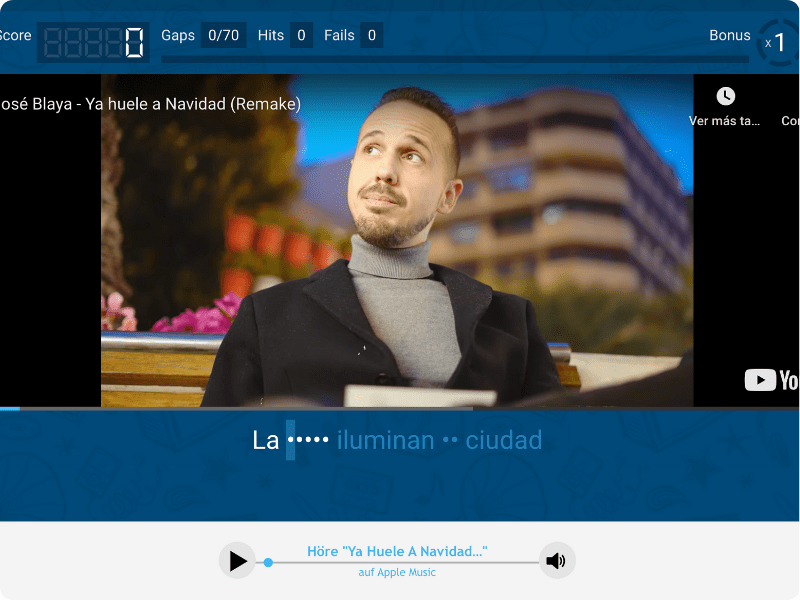Imagine sitting on your couch, speaking Spanish fluently with an AI tutor, or using augmented reality to learn vocabulary by pointing your phone at real objects. In 2025, this isn’t a dream—it’s the reality of language learning. With advancements in technology, learning Spanish has become easier, more engaging, and more effective than ever.
This blog explores ten innovative ways technology can help you master Spanish this year. Whether you’re a beginner or an advanced learner, these tools and methods will inspire your 2025 Spanish learning resolution.
Why Technology is a Game-Changer for Language Learning
The integration of technology into language education has bridged the gap between traditional methods and modern lifestyles. A recent research shows that “the language learning app users had vocabulary retention rates that were 50% higher… indicating the effectiveness of these apps in enhancing vocabulary learning.“
To give you a better idea, technology offers:
- Personalized learning paths based on your level.
- Immediate feedback to correct errors in real-time.
- Gamified experiences to make learning fun.
- Access to authentic content, like native podcasts and videos.
Let’s dive into how you can harness these advancements to learn Spanish in 2025.
10 Ways to Use Technology to Learn Spanish in 2025
1. AI-Powered Language Partner Apps
Apps like HelloTalk and Tandem now use AI to make conversation practice seamless. AI bots can simulate real-life dialogues, correct your mistakes, and even adjust their difficulty level to match your progress.
💡 Pro Tip: Dedicate 15 minutes daily to practice conversations on these apps. You’ll gain confidence while learning conversational Spanish.

Language exchange app in Spanish with AI-powered chatbot.
2. Interactive Language Games
Language games like LyricsTraining challenge you to fill in the blanks of Spanish song lyrics, improving your listening and spelling skills. Similarly, platforms like Wordwall offer customizable games to master vocabulary.
💡 Pro Tip: Use games as a break from traditional studying. Aim for 20 minutes of gameplay to reinforce what you’ve learned.

3. Augmented Reality for Vocabulary Practice
Apps like Mondly AR turn your living space into a Spanish classroom. Use your smartphone to point at objects, and the app will label them in Spanish. This hands-on method makes vocabulary learning unforgettable.
💡 Pro Tip: Walk around your home or local area with Mondly AR to build practical vocabulary.

4. Podcasts with Transcripts
Podcasts like Duolingo Spanish Podcast and Radio Ambulante now come with transcripts, allowing learners to follow along with native speakers. Listening while reading improves both comprehension and pronunciation.
💡 Pro Tip: Listen to a 10-minute episode daily, pausing to repeat key sentences aloud.

5. Voice Assistants in Spanish
Ask Siri, Alexa, or Google Assistant to interact with you in Spanish. Try setting reminders, asking for the weather, or translating words—all while practicing your Spanish-speaking skills.
💡 Pro Tip: Enable Spanish as a secondary language on your devices to get daily practice without extra effort.
6. Virtual Flashcard Decks
Apps like Anki and Quizlet have revolutionized flashcard learning. Customize your decks with images, audio, and spaced repetition algorithms to master vocabulary effectively.
💡 Pro Tip: Create thematic flashcards, such as travel phrases or food-related vocabulary.

7. Progress Tracking with Language Apps
Apps like Duolingo and Babbel let you track your progress with metrics like streaks, completed lessons, and skill levels. These gamified features make learning addictive and rewarding.
💡 Pro Tip: Set weekly goals in the app to maintain consistency and celebrate milestones.
8. Digital Comics for Fun Learning
Platforms like Webtoon or Spanish graphic novels offer a visual way to learn. Comics combine dialogue-heavy text with images, making comprehension easier and enjoyable.
💡 Pro Tip: Start with beginner-friendly comics like Condorito to build reading confidence.
- Alt Text: “Spanish digital comic with colorful illustrations and dialogue bubbles.”

9. Smart Subtitles for Netflix Shows
Extensions like Language Learning with Netflix let you watch shows with dual subtitles (Spanish and your native language). Pause, hover over words for meanings, and save new vocabulary.
💡 Pro Tip: Watch popular series like Elite or La Casa de Papel to combine entertainment with learning.
10. Gamifying Your Progress
Apps like LingQ turn learning into a game where you collect coins, unlock levels, and compete with friends. Gamification boosts motivation and keeps learning enjoyable.
💡 Pro Tip: Set challenges with friends to create a friendly competition and stay motivated.
Summary: The Future of Learning Spanish is Here
With these ten technological tools, mastering Spanish in 2025 is more accessible and enjoyable than ever. From AI-powered language partners to augmented reality apps, technology bridges the gap between traditional learning and modern convenience.
Whether you’re just starting or looking to refine your skills, there’s a tool here for everyone. Incorporate these methods into your routine and watch your Spanish fluency soar.
Start now—download an app, listen to a podcast, or even change your phone settings to Spanish.
What’s your favorite tech tool for learning Spanish? Share your experiences in the comments and let us know which method you’ll try first!

